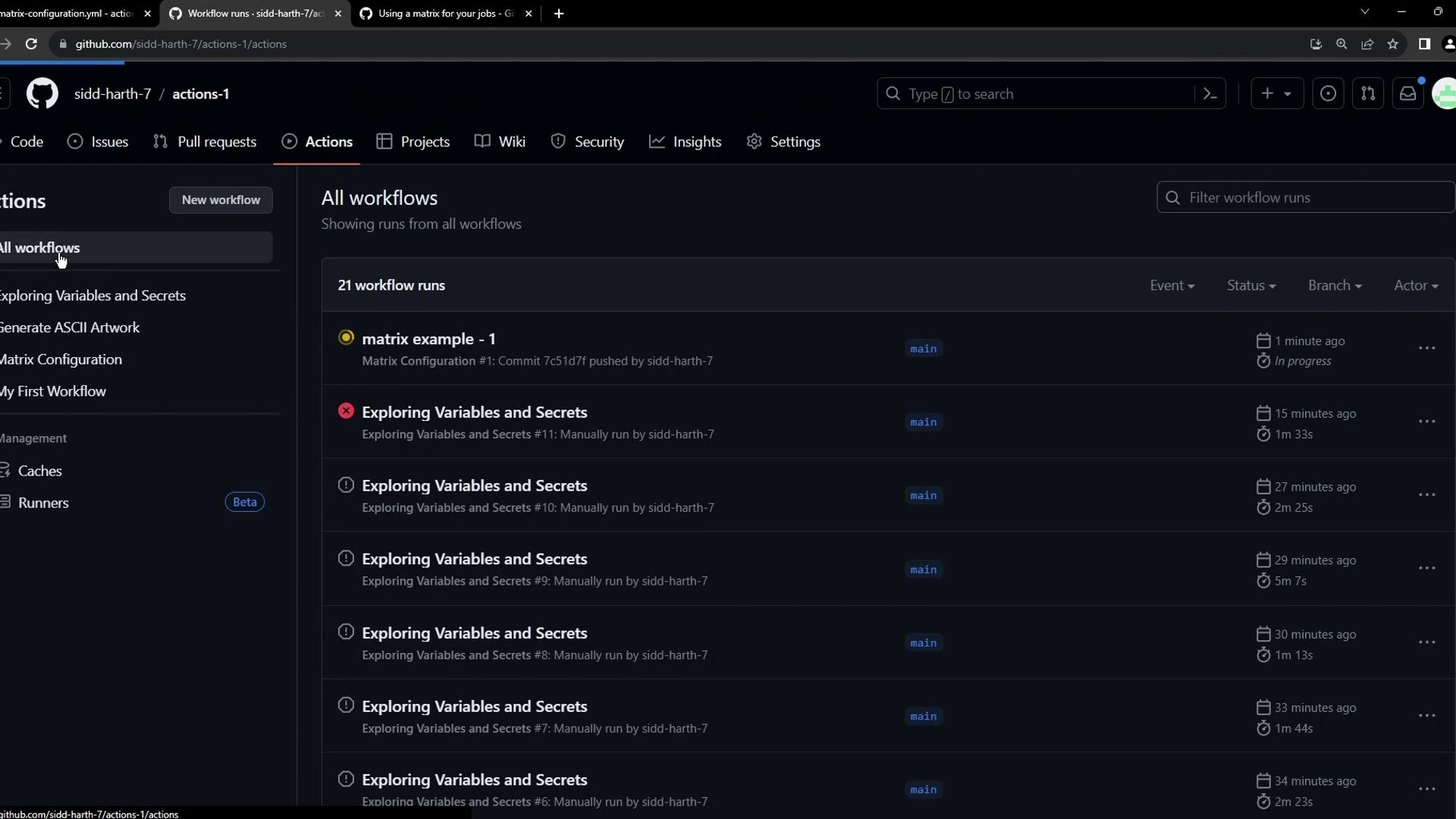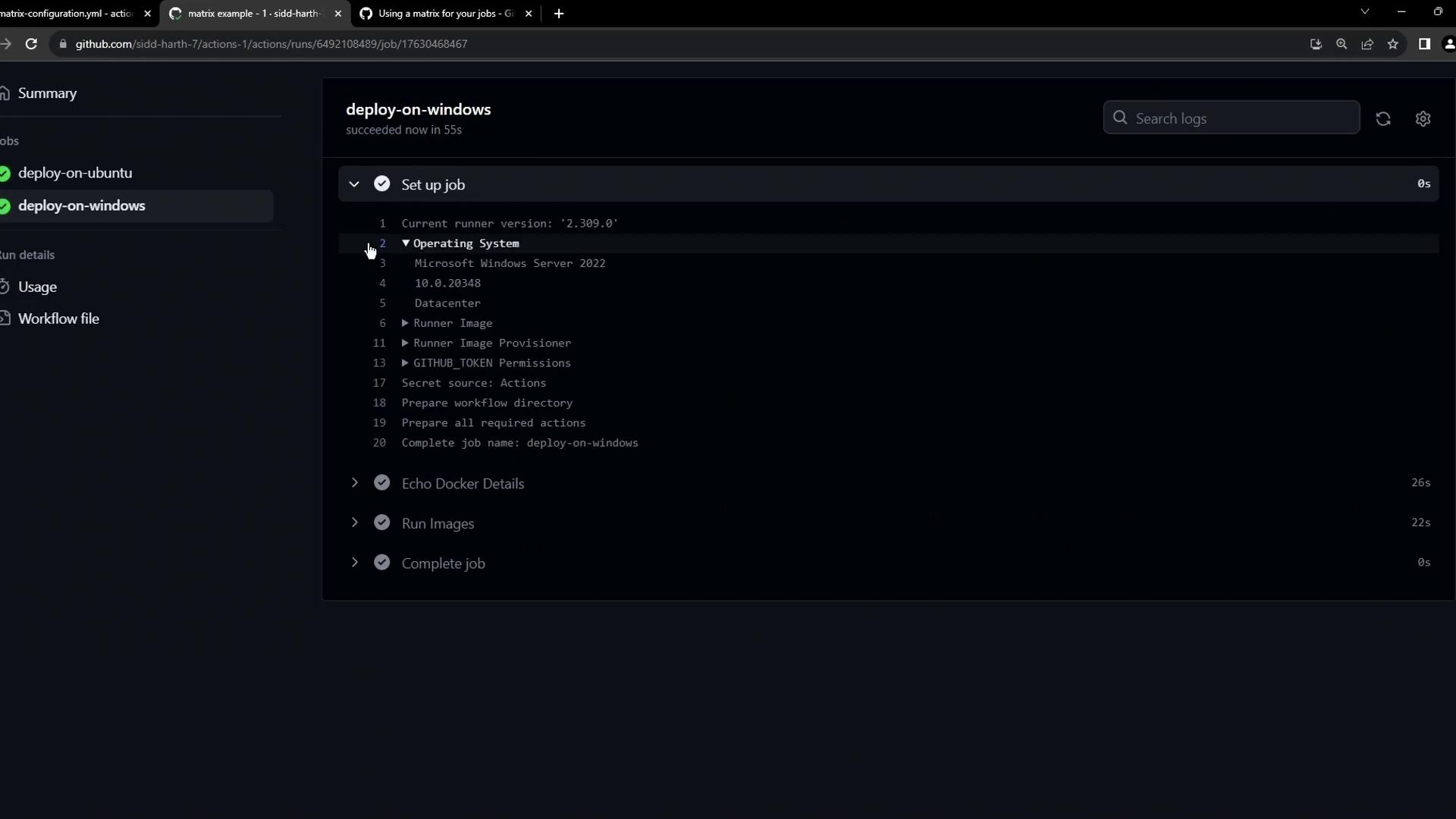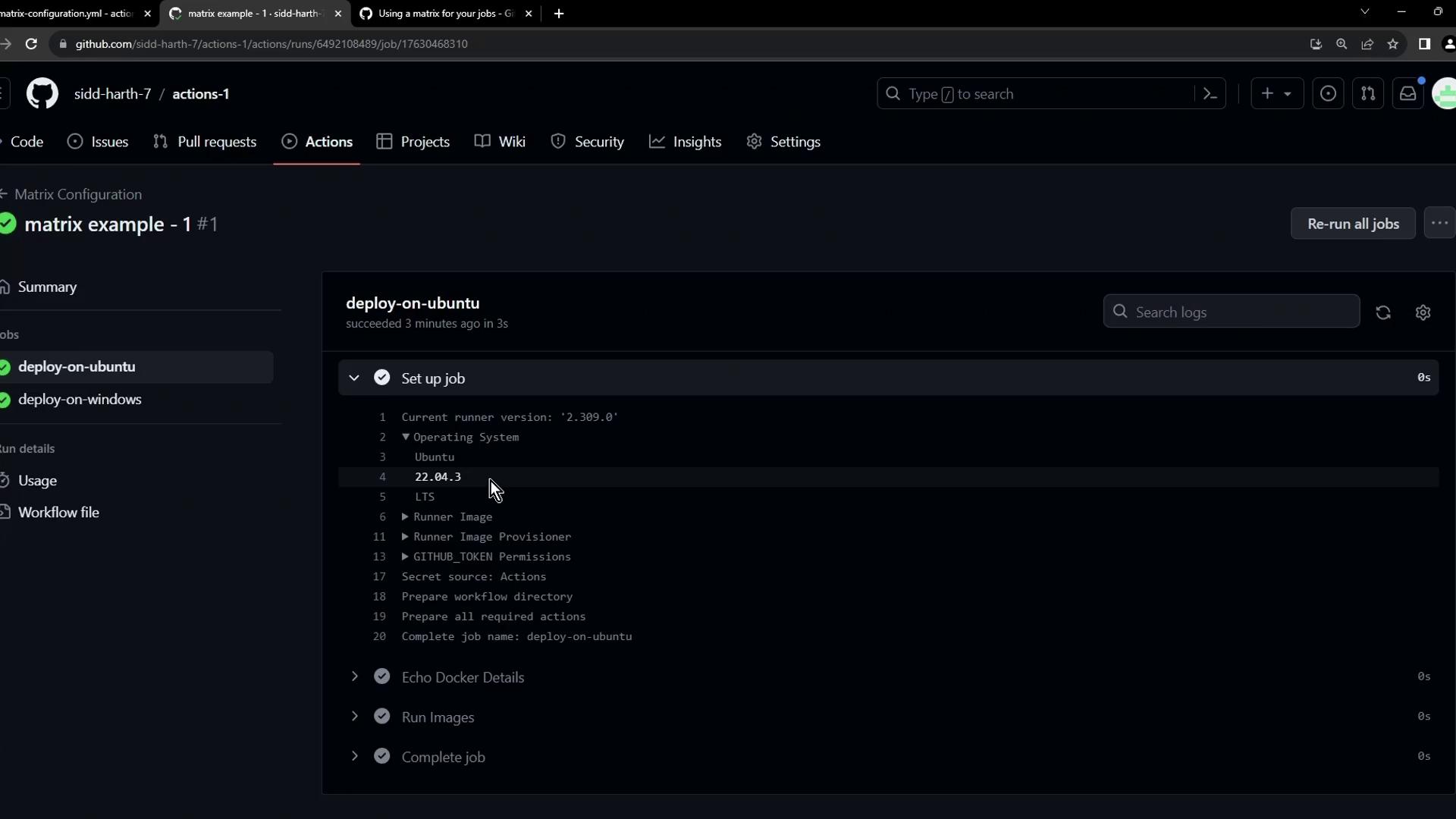GitHub Actions Certification
GitHub Actions Core Concepts
Using a matrix for your jobs
In this guide, you’ll learn how to leverage GitHub Actions' matrix strategy to run the same job across multiple environments without duplicating YAML. By the end, you’ll be able to execute Docker commands on various OS runners and image combinations in parallel.
A straightforward workflow
Below is a basic workflow that defines two separate jobs—one on Ubuntu and one on Windows—to echo Docker details and run the hello-world image.
name: Matrix Configuration
on:
push:
workflow_dispatch:
jobs:
deploy-on-ubuntu:
runs-on: ubuntu-latest
steps:
- name: Echo Docker Details
run: docker info
- name: Run Image
run: docker run hello-world
deploy-on-windows:
runs-on: windows-latest
steps:
- name: Echo Docker Details
run: docker info
- name: Run Image
run: docker run hello-world
This triggers on both push and manual dispatch, executing the same two steps on different OS runners.

Both jobs kick off in parallel and complete successfully.
Inspecting the Windows job
Click into deploy-on-windows to view details about the runner, Docker info, and the hello-world output:
Run docker info
Client:
Version: 24.0.6
Context: default
Debug Mode: false
Plugins:
compose: Docker Compose (Docker Inc.)
Version: v2.22.0
Path: C:\ProgramData\Docker\cli-plugins\docker-compose.exe
Server:
Containers: 0
Running: 0
Paused: 0
Stopped: 0
Images: 5
Server Version: 24.0.6
Storage Driver: windowsfilter
Logging Driver: json-file
Then it pulls and runs hello-world:
Run docker run hello-world
Unable to find image 'hello-world:latest' locally
latest: Pulling from library/hello-world
...
Hello from Docker!
This message shows that your installation appears to be working correctly.

The problem of repetition
Imagine scaling this to more OS versions or Docker images. You’d end up copying and pasting nearly identical job definitions:
jobs:
deploy-on-ubuntu:
runs-on: ubuntu-latest
steps:
- name: Echo Docker Details
run: docker info
- name: Run Image
run: docker run hello-world
deploy-on-windows:
runs-on: windows-latest
steps:
- name: Echo Docker Details
run: docker info
- name: Run Image
run: docker run hello-world
# ...more duplicates for other OS or images
Maintaining this becomes a headache as you add environments.
Introducing the matrix strategy
GitHub Actions’ matrix lets you define multiple variables, and it automatically expands one job into many. Here’s the minimal syntax:
jobs:
example_matrix:
strategy:
matrix:
version: [10, 12, 14]
os: [ubuntu-latest, windows-latest]
This generates six parallel jobs (3 versions × 2 OS).
| Field | Description | Example |
|---|---|---|
strategy.matrix | Defines variables to expand | version: [10,12,14], os: [ubuntu,windows] |
runs-on | Runner label substituted by matrix | runs-on: ${{ matrix.os }} |
steps | Standard job steps | run: docker run ${{ matrix.image }} |
Learn more in the GitHub Actions matrix documentation.

Converting our workflow to use a matrix
Let’s refactor our example to run two Docker images (hello-world and alpine) across three OS environments (ubuntu-latest, ubuntu-20.04, windows-latest):
name: Matrix Configuration
on:
push:
workflow_dispatch:
jobs:
deploy:
strategy:
matrix:
os: [ubuntu-latest, ubuntu-20.04, windows-latest]
image: [hello-world, alpine]
runs-on: ${{ matrix.os }}
steps:
- name: Echo Docker Details
run: docker info
- name: Run ${{ matrix.image }} on ${{ matrix.os }}
run: docker run ${{ matrix.image }}
runs-on: ${{ matrix.os }}selects the runner OS dynamically.- The second step pulls and runs each image on each OS.
When you push this change, GitHub Actions spawns six jobs in parallel:

Note
You can also filter specific combinations using include and exclude under strategy.matrix. For example:
strategy:
matrix:
os: [ubuntu-latest, windows-latest]
image: [hello-world, alpine]
exclude:
- os: windows-latest
image: alpine
This skips running Alpine on Windows.
Handling failures
In some cases, certain image/OS combinations may not be supported. For example, alpine has no Windows manifest, so that job fails:

Run docker run alpine
Unable to find image 'alpine:latest' locally
latest: Pulling from library/alpine
docker: no matching manifest for windows/amd64 in the manifest list entries.
See 'docker run --help'.
Error: Process completed with exit code 1
By default, a failure in one matrix job cancels the rest and marks the workflow as failed. Use continue-on-error: true on a step or job-level conditionals if you want to proceed despite errors.
Links and References
Watch Video
Watch video content